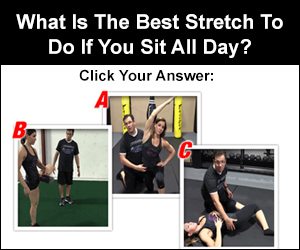Plyometric exercises are a powerful tool for enhancing athletic performance and explosive strength. These high-intensity movements involve rapid muscle contractions and stretches, effectively training the body to generate maximum force in minimal time. Plyometrics can significantly improve speed, agility, and power output across various sports and fitness activities.

Athletes and fitness enthusiasts alike can benefit from incorporating plyometric training into their routines. These exercises typically involve jumping, bounding, and quick directional changes that challenge the neuromuscular system. By mastering plyometric techniques, individuals can unlock their potential for greater vertical leaps, faster sprints, and more powerful movements in their chosen activities.
Proper form and progression are crucial when engaging in plyometric training. Starting with basic exercises and gradually increasing intensity allows the body to adapt safely and effectively. With consistent practice and attention to technique, plyometrics can lead to remarkable improvements in athletic performance and overall fitness levels.
Key Takeaways
- Plyometric exercises enhance explosive strength and athletic performance through rapid muscle contractions
- Proper form and gradual progression are essential for safe and effective plyometric training
- Regular plyometric practice can lead to significant improvements in speed, agility, and power output
Fundamentals of Plyometric Training
Plyometric training harnesses the body’s natural elasticity to generate explosive power. This method engages muscles, tendons, and ligaments through rapid stretching and contracting movements.
Understanding Plyometrics
Plyometrics focuses on quick, powerful movements to enhance athletic performance. These exercises utilize the stretch-shortening cycle, where muscles rapidly lengthen before contracting.
Key components include:
- Eccentric phase: Muscle lengthening
- Amortization phase: Brief transition period
- Concentric phase: Explosive muscle contraction
Plyometric exercises improve reaction time, speed, and power output. They target fast-twitch muscle fibers, crucial for explosive movements in sports and daily activities.
Proper technique is essential to maximize benefits and reduce injury risk. Athletes should start with low-impact exercises and progress gradually.
Biomechanics and Muscle Activation
Plyometric exercises rely on the elastic properties of muscles and connective tissues. When stretched quickly, these tissues store energy like a rubber band.
The stretch-shortening cycle involves:
- Eccentric contraction: Muscle lengthens under tension
- Amortization: Brief pause between stretching and contracting
- Concentric contraction: Rapid muscle shortening
This cycle enhances force production by utilizing stored elastic energy. Plyometrics activate both slow and fast-twitch muscle fibers, improving overall muscular power and coordination.
Joints play a crucial role in plyometric movements. They act as shock absorbers and force transmitters, requiring proper alignment and stability during exercises.
Essential Plyometric Exercises
Plyometric exercises are explosive movements that enhance power, speed, and agility. These drills target muscles throughout the body, improving athletic performance and overall fitness.
Lower Body Drills
Box jumps are a fundamental plyometric exercise. Start with a low box and progress as you build strength. Jump onto the box, landing softly with bent knees. Step down and repeat.
Squat jumps target the quadriceps, hamstrings, and glutes. Begin in a squat position, then explode upward, reaching for the ceiling. Land softly and immediately sink into the next squat.
Tuck jumps develop core strength and leg power. Jump straight up, bringing your knees to your chest. Land softly and repeat.
Bounding involves exaggerated running steps, focusing on hang time and distance. This drill improves stride length and power for runners and sprinters.
Upper Body and Core Drills
Plyometric push-ups build explosive upper body strength. Start in a push-up position, lower your chest to the ground, then push up forcefully so your hands leave the ground.
Medicine ball slams target the core and upper body. Lift a medicine ball overhead, then slam it to the ground with force. Catch the ball on the rebound and repeat.
Burpees are a full-body plyometric exercise. Begin standing, drop into a squat, place hands on the floor, kick feet back into a plank, do a push-up, jump feet forward, then leap up with arms overhead.
Plyometric Workouts for Specific Sports
Basketball players benefit from lateral bounds. Jump sideways over a line or low hurdle, focusing on quick, powerful movements to improve lateral agility.
Volleyball players can enhance their vertical jump with depth jumps. Step off a box, land softly, then immediately explode upward into a maximum-height jump.
Sprinters can improve acceleration with frog jumps. Start in a deep squat, leap forward as far as possible, landing in a squat position. Repeat for distance or time.
Soccer players can boost kicking power with lateral jumps. Stand on one leg, jump sideways, land on the opposite leg, then immediately jump back. This drill strengthens stabilizing muscles and improves lateral power.
Proper Form and Safety in Plyometrics

Plyometric exercises require careful attention to technique and safety precautions. Correct form and proper preparation are essential for maximizing benefits and minimizing injury risks.
Technique and Posture
Proper plyometric form starts with the landing. Athletes should land softly on the balls of their feet, absorbing impact through the ankles, knees, and hips. The knees should track over the toes and not cave inward.
Maintaining a slight bend in the knees helps distribute force and improve stability. The core should remain engaged throughout each movement. A neutral spine position is crucial for protecting the back.
For jumps, athletes should start in a quarter squat position. This allows for optimal power generation. The arms should swing in coordination with leg movements to enhance momentum.
Control is key in plyometrics. Each repetition should be deliberate and focused. Quality trumps quantity in these explosive exercises.
Injury Prevention and Risk Management
Proper warm-up is essential before plyometric training. This includes dynamic stretching and light cardio to increase blood flow to muscles. Gradually increasing intensity helps prepare the body for more demanding movements.
Appropriate footwear provides necessary support and cushioning. Training surfaces should offer some give to reduce impact on joints. Avoid hard concrete or uneven terrain.
Rest periods between sets are crucial. They allow for recovery and help maintain proper form throughout the workout. Overtraining can lead to fatigue and increased injury risk.
Athletes should listen to their bodies. Any pain or discomfort during exercises warrants immediate attention. Proper progression is vital – beginners should start with low-impact variations and gradually increase difficulty.
Regular strength training complements plyometrics by building a solid foundation. This improves overall stability and reduces injury potential during explosive movements.
Training Progression and Adaptation
Plyometric training requires careful progression and adaptation to maximize results while minimizing injury risk. Proper integration with strength training and periodization are key components of an effective program.
From Beginner to Advanced
Beginners should start with low-intensity exercises like squat jumps and box jumps. Focus on proper form and landing technique before increasing intensity. Aim for 2-3 sets of 5-8 reps per exercise, twice weekly.
As fitness improves, gradually increase volume and intensity. Intermediate athletes can progress to depth jumps and bounding exercises. Advanced trainees may incorporate more complex movements like depth jumps with lateral movement.
Always allow 48-72 hours between plyometric sessions for recovery. Monitor fatigue levels and adjust accordingly.
Integrating Plyometrics with Strength Training
Combining plyometrics with strength training can enhance explosive power development. Perform plyometric exercises at the start of workouts when fresh, or on separate days from heavy lifting.
A sample lower body routine might include:
- Barbell squats: 3-4 sets of 4-6 reps
- Box jumps: 3 sets of 5 reps
- Romanian deadlifts: 3 sets of 8-10 reps
- Depth jumps: 2-3 sets of 6 reps
This approach balances strength development with explosive power training.
Periodization and Workout Planning
Incorporate plyometrics into a periodized training plan to optimize performance gains. During off-season or general preparation phases, focus on building a strength base with moderate plyometric volume.
As competition approaches, increase plyometric intensity and specificity while reducing overall training volume. This helps peak explosive power for key events.
A sample 12-week plan might look like:
- Weeks 1-4: 2x/week, low intensity, focus on technique
- Weeks 5-8: 2-3x/week, moderate intensity, increase volume
- Weeks 9-12: 2x/week, high intensity, sport-specific movements
Adjust based on individual needs and sport requirements.
Auxiliary Aspects of Plyometric Training

Proper preparation, recovery, and environment play crucial roles in maximizing the benefits of plyometric exercises. These elements ensure safety, effectiveness, and optimal performance gains.
Warm-Up Strategies
Dynamic stretching and light aerobic activities form the foundation of an effective plyometric warm-up. Start with 5-10 minutes of jogging or jump rope to increase heart rate and body temperature. Follow this with dynamic movements like leg swings, arm circles, and bodyweight squats.
Include sport-specific movements that mimic the upcoming exercises. For instance, perform low-intensity hops before progressing to box jumps. This prepares the neuromuscular system for explosive movements.
Gradually increase the intensity and range of motion during the warm-up. This helps activate muscle fibers and improve joint mobility, reducing the risk of injury during high-impact exercises.
Nutrition and Recovery
Proper nutrition supports energy levels and muscle recovery in plyometric training. Consume a balanced meal with carbohydrates and protein 2-3 hours before exercise. This provides fuel for intense muscle contractions and supports post-workout recovery.
Stay hydrated before, during, and after workouts. Water helps regulate body temperature and transport nutrients to working muscles.
Post-workout, eat a meal with protein and carbohydrates within 30 minutes. This aids muscle repair and glycogen replenishment.
Allow 48-72 hours between plyometric sessions for adequate recovery. This rest period helps prevent overtraining and reduces the risk of stress fractures or joint injuries.
Equipment and Training Environment
Plyometric exercises can be performed with minimal equipment. Essential items include:
- Sturdy plyometric boxes of varying heights
- Medicine balls in different weights
- Agility cones for marking distances
A shock-absorbing surface is crucial for high-impact movements. Rubber mats or specialized plyometric platforms protect joints and bones from excessive stress.
Outdoor environments like grass fields or sand provide natural cushioning. However, ensure the surface is level and free of obstacles.
For beginners or those without equipment, focus on bodyweight exercises. Squat jumps, burpees, and lateral bounds require no tools yet effectively develop explosive power.

